
1
Encoded Head user manual
Version 2018/08/31

2
Summary
Encoded Head user manual ................................................................................................................. 1
Encoded head ...................................................................................................................................... 3
Tech Specs ............................................................................................................................................ 3
Electrical connections .......................................................................................................................... 3
Pan/Tilt encoders ............................................................................................................................. 3
BiSS ....................................................................................................................................................... 4
Electrical Data .................................................................................................................................. 4
BiSS Protocol ........................................................................................................................................ 5
Bidirectional Serial Sensor Interface (BiSS) ..................................................................................... 5
Transmitting sensor data (BiSS-Mode) ............................................................................................ 5
Register – mode ( BiSS – Interface) ................................................................................................ 6
Register mode: read ........................................................................................................................ 6
Register mode: write ....................................................................................................................... 7
Timing ................................................................................................................................................... 8
Timing BiSS Sensor Mode ................................................................................................................ 8
Timing BiSS Register Mode .............................................................................................................. 9

3
Encoded head
The latest response to encoded support as needed in the Virtual Reality shooting. Strong,
versatile, including all features of a standard CARTONI fluid action camera support head, the
encoded heads features extremely high resolution direct sensing encoders in both pan and tilt,
absolute positioning with no need to re-calibrate at start up, simple cabling.
CARTONI encoded heads are compatible with most 3D packages for real time camera/scene
movement in virtual set and pre-visualization, it is the ideal solution for sports 3D graphic
insertions.
Tech Specs
Operating temperature
15°÷ +85°
Storage temperature
15°÷ +120°
Supply voltage
5± 10%
Current w/o load typ.
100
Encoder resolution
22 (4.194.304 /)
Output code
Drives
422
3dB limiting frequency
500
Absolute accuracy
± 35
Repeatability
±10
Electrical connections
Pan/Tilt encoders
Lemo ECG.1B.307.CLL
1 GND
2
Not Used
3 +5V
4
Data
Input
5
Data/
Input
6 Clock Output
7
Clock/
Output

4
BiSS
Electrical Data
Input / Output Signal
: 422 ()
: 422 ()
: 100 …10
0F
1: 12
: 51
Outputs:
Driver output current: max 60
Short circuit output current : ± 250
Cable:
Leads for clock and data should be twisted in pairs
Entire cable shielded and according to CAT 5
Cable capacity 100 /
Cable length max 100
Baud rate <10
1 and are programmable.

5
BiSS Protocol
Bidirectional Serial Sensor Interface (BiSS)
The Serial BiSS communication differentiates between the fast transmission of sensor data and
the slower transmission of register data. The transmission of sensor data is unidirectional; here,
encoder can only output data, whereas the bidirectional transmission of register data can include
read and write access.
The BiSS sensor interface can be operated in an SSI compatible mode, in which only a lower
transmission speed is possible and encoder may not demand processing time for procedures such
as interpolation, for example.
Transmitting sensor data (BiSS-Mode)
Transmission is initiated by a falling edge on the master line (MA). The master then again ramps
the master line up to high within a stipulated period (<timeoutSENS) and continues the clock
pulse. encoder acknowledges the request for sensor data on the second rising MA edge with a
low signal at SLO (see description of the BiSS protocol). The next rising edge gives the validity of
the position data and is interpreted as a start bit by the master.
Depending on the configuration the length of encoder’s position data varies between 9 and 45
bits, plus an error bit and a warning bit. With a maximum length of 47 bits this data is protected
by a 6-bit cyclic redundancy check value or CRC (polynomial 0x43 = "1000011b") which directly
follows the data. MCD: Multicycle data is not supported!
Transmission of sensor data in BiSS mode.
The Warning – Bit (War) is coupled to the internal temperature sensor of the OptoAsic. It is high,
when the following temperature limits are exceeded or under - run:
Operating temperature
Internal Warning tresholds
- 15° ... +120°C
-20° .. +125°C
The Error – Bit (Err) is coupled to the LED – current. It is high, when an factory defined threshold
is exceeded. An excess LED current can indicate Pollution; Condensation, Over temperature or
Ageing of the LED

6
Chart: Alignment Bits
0
9
0
12
10
0
16
11
0
20
12
0
24
13
0
14 0
15 2
16 1
17 0
18 6
19
5
20
4
21
3
22
2
23
1
24
0
Values in columns: “Length of Data bits”
Register – mode ( BiSS – Interface)
The register communication is initiated by a low signal following the first falling edge from the
master on the clock line. The master keeps the clock line on low until the encoder reacts with a
falling edge on the data line and thus signaled the changeover to register mode. After this has
happened the master transmits the addressing data coded as a PWM signal (pulse width
modulated clock signal). The individual sensors (slaves) are addressed by slave IDs which are
generated automatically according to the order of the slaves in the sequential circuit. encoder
uses two slave Ids (e.g. ID "000" and "001") so that it can extend the available addressing range
from 7 to 8 bits.
Register mode: read
Once encoder has signaled the changeover to register mode the master transmits the start bit,
the 3- bit slave ID and the 7-bit register address for the addressing sequence, followed by the
WNR bit ("0") and the 6-bit CRC. Each bit is coded by the duty cycle (PWM), including the start bit.
The generator polynomial for the 4-bit CRC is 0x13 = "10011" (see the definitions in the
description of the BiSS protocol). The encoder does not require any processing time to read the
internal registers and answers immediately with the data of the addressed registers. When
reading the external EEPROM registers the output is delayed until the data from the EEPROM has
been made available. All 8-bit read data can also be checked for transmission errors by the 4-bit
CRC 0x13.

7
Register mode: write
When data is being written to a register, after the encoder has confirmed the mode changeover
the same addressing sequence as for read access is used (with the WNR bit at "1"). Following the
second start bit the master transmits the data to be written which encoder returns for
verification, bit by bit one clock pulse later. As in the above, a 4-bit CRC have to follow the 8-bit
write data which is returned by encoder in the same manner, however not in PWM format. A
transfer to the EEPROM registers is processed in the background and can be validated by a read
access once transmission is over.

8
Timing
Timing BiSS Sensor Mode
BiSS Sensor Mode
Symbol Parameter Conditions min typ max. Unit
timeout sens (Ttos)
2
9,9 12,4 14,9 µs
TMAS Permissible Clock Period 100 ns 2* Ttos
tMASh
Clock Signal Hi Level
Duration
50
Ttos
ns
tMASl Clock Signal Lo Level
Duration
50 Ttos ns
Treq Data Request Lo Level
Duration
only with SAR
converter
50 Ttos ns
2 Ttos = is programmable Time

9
Timing BiSS Register Mode
BiSS Register Mode
Symbol Parameter Conditions Min Max. Unit
TMAR Permissible Clock Period CFGTOR = 2Eh 4 52 µs
Tidle
Permissible Clock Halt (idle)
0
Indefinite
tMARh
Clock Signal Hi Level
Duration
read out of register
data
50 %
% TMAR
tMARl
Clock Signal Lo Level
Duration
Ttor
ns
tMA0h .Logic 0" Hi Level Duration 10 30 % TMAR
tMA1h
.Logic 1" Hi Level Duration
70
90
% TMAR

10
Example for read register 78h
Keep clock active until start bit is sent by encoder. Approx. time ~ 416 µs
See Figure: The clock should be applied until encoder sends ACK ( ~ 416 µs). This time is needed
because the ASIC has to read the EEPROM internally before sending the data. There are different
times for different registers because registers are mapped either directly in the ASIC or externally
to an EEPROM value (takes more time).
-
 1
1
-
 2
2
-
 3
3
-
 4
4
-
 5
5
-
 6
6
-
 7
7
-
 8
8
-
 9
9
-
 10
10
Cartoni HM3000/EN User manual
- Type
- User manual
Ask a question and I''ll find the answer in the document
Finding information in a document is now easier with AI
Related papers
Other documents
-
Texas Instruments C2000 Position Manager BISS-C Library User guide
-
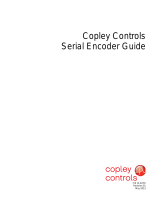 Copley Controls Serial Encoder User manual
Copley Controls Serial Encoder User manual
-
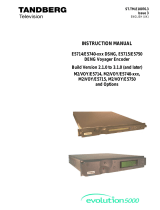 TANDBERG E5750 DENG Voyager User manual
TANDBERG E5750 DENG Voyager User manual
-
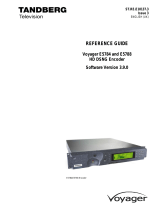 TANDBERG Voyager E5784 Reference guide
TANDBERG Voyager E5784 Reference guide
-
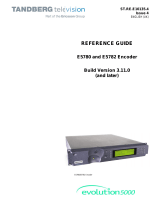 TANDBERG E5782 Reference guide
TANDBERG E5782 Reference guide
-
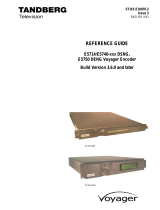 TANDBERG E5750 DENG Voyager Reference guide
TANDBERG E5750 DENG Voyager Reference guide
-
Ericsson AVP 1000 1RU Reference guide
-
Ericsson MX8400 User guide
-
JVC TDR6 User manual
-
Kollmorgen SERVOSTAR 300 User manual














